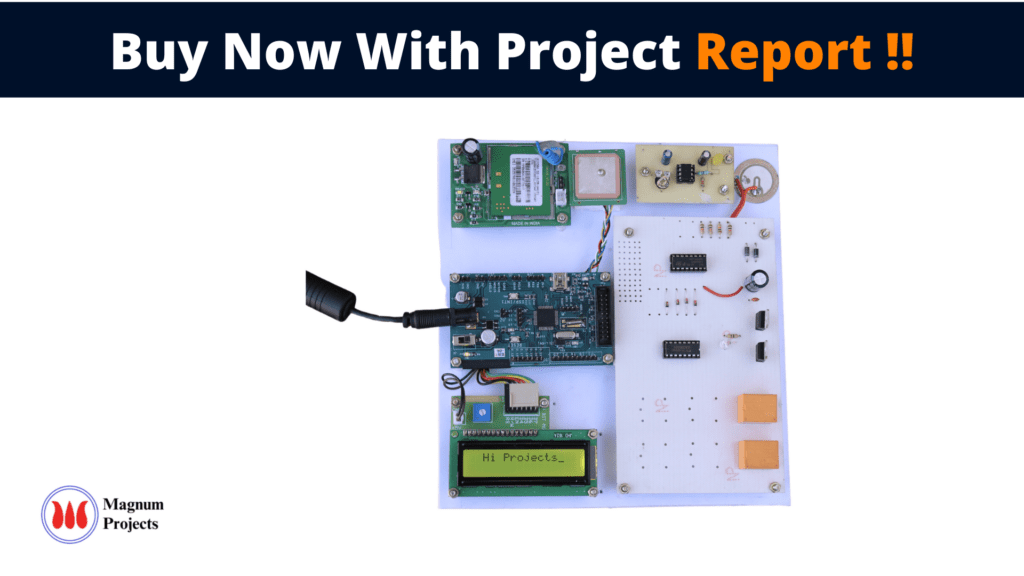Table of Contents
Introduction:


GSM and GPS-based vehicle location and tracking systems will provide effective, real-time vehicle location, mapping, and reporting of this information value and add by improving the level of service provided. A GPS-based vehicle tracking system will inform where your vehicle is and where it has been, how long it has been. The system uses geographic position and time information from the Global Positioning Satellites. The system has an “On-Board Module” which resides in the vehicle to be tracked and a “Base Station” that monitors data from the various vehicles. The On-Board module consists of a GPS receiver and a GSM modem.
A vehicle tracking system combines the installation of an electronic device in a vehicle, or fleet of vehicles, with purpose-designed computer software to enable the owner or a third party to track the location of the vehicle, collecting data in the process. Modern vehicle tracking systems commonly use Global Positioning System (GPS) technology for locating the Vehicle. To achieve an automatic Vehicle Location system that can transmit the location information in real-time. The information is transmitted to the Tracking server using GSM/GPRS modem on the GSM network by using SMS or using a direct TCP/IP connection with the Tracking server through GPRS. The tracking server also has GSM/GPRS modem that receives vehicle location information via the GSM network and stores this information in the database. This information is available to authorized users of the system via a website over the Internet.


Block diagram explanation
Power supply unit
This section needs two voltages viz., +12 V & +5 V, as working voltages. Hence specially designed power supply is constructed to get regulated power supplies.
GPS module:
This is a GPS Receiver (5V Serial) with high gain having 4 Pin 2.54mm pitch strip. The third-generation POT (Patch Antenna on Top) is used by the receiver for the GPS module. It can be interfaced with normal 5V ARM7 with the help of the in-built 3V-5V converter. The interfacing is made easier with the help of a low pin count (4-pin) strip. The 4 Pins are 5V, TX, RX, and GND. This standalone 5V GPS Module does not require external components. It consists of an internal RTC Back up battery and can be directly connected to the USART of the ARM7.
The current date, time, longitude, latitude, altitude, speed, and travel direction / heading among other data, are provided by the module and can be used in many applications including navigation, fleet management, tracking systems, mapping, and robotics. The module can support up to 51 channels. The GPS solution enables small form factor devices which deliver major advancements in GPS performance, accuracy, integration, computing power, and flexibility. They are used to simplify the embedded system integration process.
GSM:
GSM Shield (SIM 900a): The SIM900 which is a complete Quad-band GSM/GPRS solution comes in a SMT module that can be embedded in customer applications. Featuring an industry-standard interface, the SIM900 delivers GSM/GPRS 850/900/1800/1900MHz performance for Data, voice, SMS, and Fax in a small form factor and with low power consumption. SIM900 can fit almost all the space requirements in the M2M application with dimensions of 24mm x 24mm x 3 mm. SIM900 is designed with a very powerful single-chip processor integrating AMR926EJ-S core. Quad-band GSM/GPRS module with a size of 24mmx24mmx3mm, SMT type suit for customer application, An embedded Powerful TCP/IP protocol stack Based upon the mature and field-proven platform, backed up by our support service, from definition to design and production.
ARM processor
ARM is a computer processor-based RISC architecture. A RISC-based computer design approach means ARM processors require significantly fewer transistors than typical processors in average computers. This approach reduces costs, heat, and power use. The low power consumption of ARM processors has made them very popular:
The ARM architecture (32-bit) is the most widely used in mobile devices, and the most popular 32-bit one in embedded systems.
Buffers
Buffers do not affect the logical state of a digital signal (i.e. a logic 1 input results in a logic 1 output whereas logic 0 input results in a logic 0 output). Buffers are normally used to provide extra current drive at the output but can also be used to regularize the logic present at an interface
Drivers
This section is used to drive the relay where the output is the complement of input which is applied to the drive but the current will be amplified.
Relays
It is an electromagnetic device that is used to drive the load connected across the relay and the o/p of the relay can be connected to the controller or load for further processing.
Buzzer:
A buzzer or beeper is an audio signaling device, which may be mechanical, electromechanical, or piezoelectric. Typical uses of buzzers and beepers include alarm devices, timers, and confirmation of user input such as a mouse click or keystroke.
DC motor:
A DC motor relies on the fact that magnet poles repel and unlike magnetic poles attract each other. A coil of wire with a current running through it generates an electromagnetic field aligned with the center of the coil. By switching the current on or off in a coil its magnetic field can be switched on or off or by switching the direction of the current in the coil the direction of the generated magnetic field can be switched 180°.
Indicator:
This stage provides a visual indication of which relay is actuated and deactivated, by glowing respective LED or Buzzer.
Methodology:
This module consists of an accident alert system, GPS Module, GSM Module, ARM controller unit, and the output. If an accident happens to the car which has this module in it, then that signal will be to applied the ARM controller and the controller analyses the signal and activates a buzzer to indicate the accident has happened. The information about the location will be transmitted to the caretaker via GSM concerning coordinates that are received from GPS Receiver.
Advantages:
- Flexible and reliable.
- This application is easy to install and easy to operate.
- More reliable than manual Operation.
- In this project losses are Minimal.
- This project can implement for the Security of supply.
- Automatically controlled & Easy to use.
Disadvantages:
- It increases the cost whereas digital systems reduce the cost of the system.
- High Cost.
Applications:
- This system can be implemented in industries.
- We can implement this project in all vehicles.
- Where security is important there we can implement this project.
- Without much change in the circuit; it can be used with any 4-wheeler.




